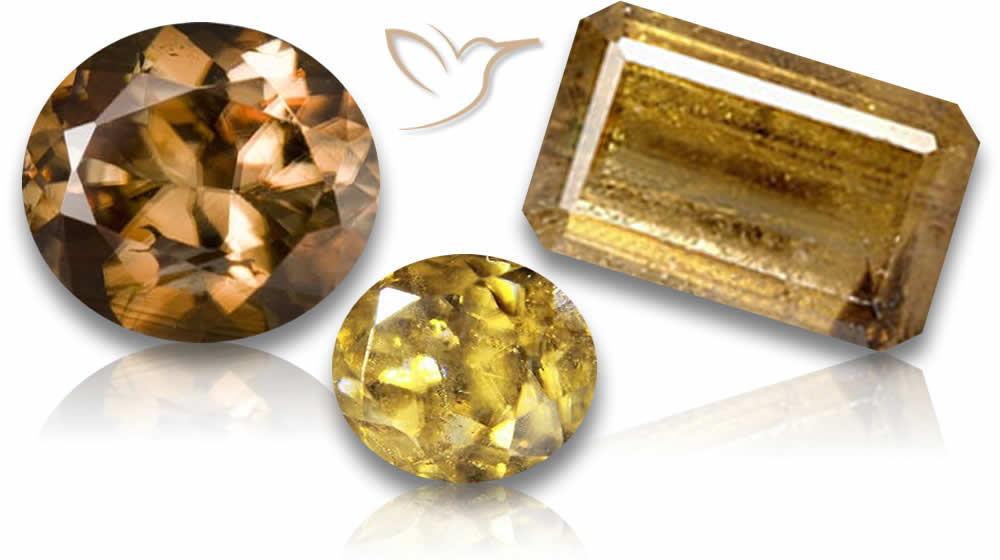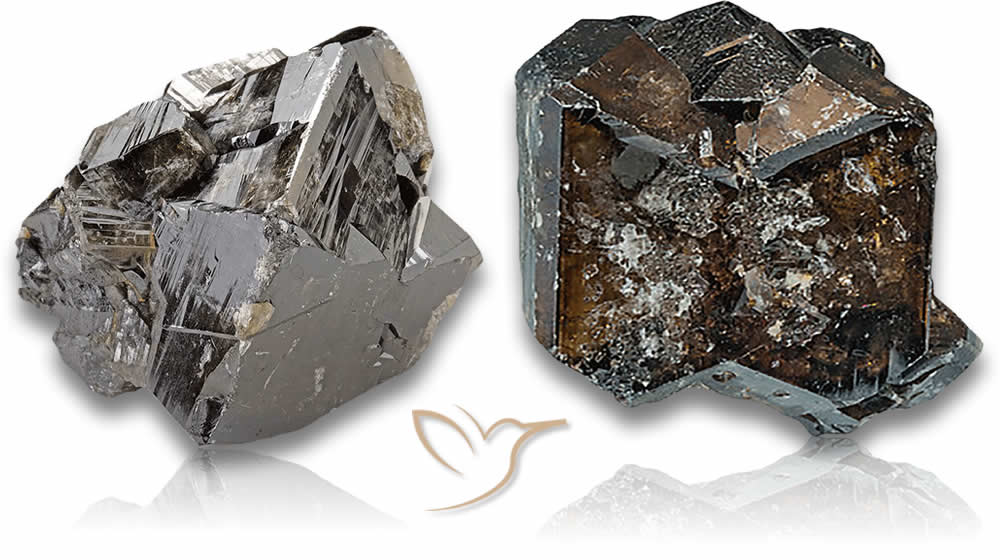Cassiterite Gemstone: Unearth Its Hidden Beauty

As gem enthusiast, we are excited to explore the allure of the Cassiterite Gemstone. Cassiterite gemstones are known for their unique characteristics and gemological properties, making them a timeless treasure in the world of gemstones. In this section, we will delve into the intriguing history of the Cassiterite Gemstone and learn about its finest characteristics.
Feel free to explore our current stock of natural Cassiterite gemstones for sale right here.
Key Takeaways
- Cassiterite gemstones have unique characteristics and gemological properties.
- Cassiterite Gemstone has an intriguing history.
- Cassiterite Gemstone is a timeless treasure in the world of gemstones.
Exquisite Colors and Crystal Clarity
The Cassiterite Gemstone is renowned for its stunning range of colors, from warm earthy tones to vibrant shades that set it apart from other gemstones. The color of Cassiterite varies, depending on the mining location, and is typically black, brown, yellow, or red, with hints of green or blue in some cases. Cassiterite's unique hues make it an eye-catching gemstone that is perfect for adding a touch of elegance to any piece of jewelry.
The crystal clarity and precision cut of Cassiterite enhance its inherent brilliance, creating a gemstone that sparkles with a brightness that rivals even the most radiant of gems. The clarity of Cassiterite is superb, with few if any inclusions in most cases. The stone can be cut into various shapes to showcase its beauty, including emerald, cushion, and round cuts.
| Property | Description |
|---|---|
| Cassiterite Color | Cassiterite exhibits a rich spectrum of colors, including black, brown, yellow, and red, and often features hints of green or blue. |
| Cassiterite Clarity | With few if any inclusions, the clarity of Cassiterite is superb and makes for a flawless gemstone. |
| Cassiterite Cut | Cassiterite can be cut into various shapes, including emerald, cushion, and round cuts, to showcase its beauty and radiance. |
As a gemstone with such beauty, Cassiterite is an excellent choice for those looking to add a touch of glamour to their jewelry collections.
Unraveling the Fascinating Lore
Colored in varying shades of brown, red, and yellow, Cassiterite is one of the most beautiful gemstones in the world. In addition to its exceptional aesthetic qualities, it also boasts impressive hardness, measuring 6-7 on the Mohs scale, which is comparable to the hardness of steel.
Cassiterite is typically an untreated gem, making it one of the few gem types that remains completely unenhanced throughout production, all the way from the mine to the market.
Cassiterite is primarily found in Bolivia, Rwanda, and China, with other deposits located in Namibia and the Democratic Republic of Congo. Although the locations of these mines are remote and challenging to access, the gem's unique beauty makes it worth the effort.
Cassiterite Gemstone Jewelry: Timeless Elegance
When it comes to jewelry, Cassiterite's unique appearance and versatile quality make it an ideal choice for creating stunning pieces. With its rich colors and exceptional clarity, it's no surprise that Cassiterite jewelry makes for a timeless addition to any collection.
Compared to other gemstones, such as tourmaline, idocrase, and apatite, Cassiterite stands out for its remarkable durability and hardness. Its Mohs hardness rating of 6-7 ensures that it can resist scratches and damage better than other gemstones, making it a top choice for jewelry that is meant to be worn every day.
| Gemstone | Hardness |
|---|---|
| Cassiterite | 6-7 |
| Tourmaline | 7-7.5 |
| Idocrase | 6.5-7 |
| Apatite | 5 |
Another advantage of Cassiterite is its striking appearance. With its earthy brown tones, it pairs beautifully with warm gold settings, creating a rustic and regal look. It's also available in blue, red, yellow, and green hues, giving jewelry makers endless options for creating unique designs.
Overall, Cassiterite Gemstone Jewelry is a testament to timelessness and elegance. Its durability, beauty, and versatility make it an ideal choice for everyday wear and special occasions alike.
Caring for Your Cassiterite Gemstone
To keep your Cassiterite Gemstone shining like new, regular care and maintenance are essential. It's important to remember that this gemstone is relatively soft, measuring 6-7 on the Mohs hardness scale, meaning it requires a gentle touch when cleaning and handling.
Cleaning
To clean your Cassiterite gemstone, simply wipe it with a soft, slightly damp cloth to remove any dirt or oils that may have accumulated on its surface. Avoid the use of harsh chemicals, ultrasonic cleaners, and steam cleaners, as they can damage it. Instead, opt for warm water and mild soap when necessary. Be sure to rinse the gemstone thoroughly and dry it with a soft cloth or allow it to air dry completely.

Storage
When not in use, store your Cassiterite separately from other pieces of gemstones and jewelry to prevent scratches and other types of damage. Consider storing it in a soft cloth or jewelry pouch to protect it from dust, moisture, and other environmental factors.
Handling
When handling your Cassiterite, it is recommended to avoid exposure to extreme temperatures, direct sunlight, and excessive force or pressure. It's also important to remove your jewelry before engaging in any strenuous physical activity or using harsh chemicals.
Final Thoughts
With proper care and maintenance, your Cassiterite can remain a stunning piece of gemstone for years to come. Remember to be gentle, store it properly, and handle it with care, and you'll continue to enjoy its beauty and shine for many years.
Beyond Beauty: Cassiterite's Healing Properties
Cassiterite is believed to possess a variety of metaphysical and healing properties. Its grounding energies are said to help individuals connect with the earth and find inner stability and strength. This gemstone is also believed to promote positivity, enhance mental clarity, and aid in decision-making.
Cassiterite is thought to possess empowering energies that can help individuals overcome challenges and achieve their goals. Some believe that wearing or carrying a cassiterite gemstone can enhance feelings of self-confidence and courage.
Those who practice crystal healing often use cassiterite to address imbalances in the root chakra, which is associated with feelings of security and stability. This gemstone is also believed to be beneficial for the immune system, helping to boost the body's natural defenses against illness and disease.
Whether you are looking to tap into the grounding and empowering properties of cassiterite or simply appreciate its beautiful appearance, this gemstone is a true treasure.
Conclusion
In conclusion, Cassiterite is an extraordinary gem with a unique allure and a rich history. Its exquisite range of colors and impressive clarity make it a popular choice for jewelry. Compared to other gemstones, its hardness and durability make it a timeless treasure that can be enjoyed for years to come. Caring for your Cassiterite Gemstone is essential to maintain its stunning beauty and longevity. Beyond its physical beauty, Cassiterite's healing properties offer grounding and empowering energies for those who wear it. If you are looking for a gemstone that is one-of-a-kind, Cassiterite is the perfect choice. Its captivating allure, unique properties, and fascinating history make it a gemstone worth discovering.
FAQ
What are the gemological properties of Cassiterite?
Cassiterite is a tin oxide mineral known for its high refractive index and dispersion, which gives it excellent brilliance and fire. It has a hardness of 6-7 on the Mohs scale and is typically found in brown, black, or gray colors.
What is the history of Cassiterite?
Cassiterite has a rich history dating back centuries. It has been used for jewelry and decorative purposes since ancient times. Historically, it was an important ore for the production of tin, which was used in various applications, including making bronze and tin-plating. The name "cassiterite" is derived from the Greek word for "tin."
How does the color and clarity of Cassiterite enhance its beauty?
Cassiterite gemstones exhibit a range of colors, including brown, black, and gray. Some specimens may also display yellow, red, or green hues. The gemstone's crystal clarity and precision cut further enhance its beauty by maximizing its brilliance and sparkle.
How is Cassiterite treated, and where is it mined?
Cassiterite gemstones are usually not treated, as they are valued for their natural beauty and unique characteristics. The gemstone is primarily mined in countries such as China, Bolivia, Russia, and Brazil, among others.
How does Cassiterite compare to other gemstones like tourmaline, idocrase, and apatite?
While Cassiterite and tourmaline share similar colors, Cassiterite's high refractive index and dispersion give it a distinct brilliance. Idocrase, also known as vesuvianite, has a different crystal structure and exhibits a wider range of colors. Apatite, on the other hand, can also vary in color but has a lower hardness compared to Cassiterite.
How do I care for and clean my Cassiterite gemstone jewelry?
To care for your Cassiterite gemstone, avoid exposing it to extreme heat or chemicals. Clean it with warm soapy water and a soft brush, rinse thoroughly, and dry with a soft cloth. It is also recommended to store your jewelry in a separate pouch or box to prevent scratching or damage.
What are the healing properties associated with Cassiterite?
Some believe that Cassiterite has grounding and empowering energies. It is said to help increase self-confidence, stimulate creativity, and promote balance and harmony in one's life. It is also believed to provide protection and aid in decision-making processes.

